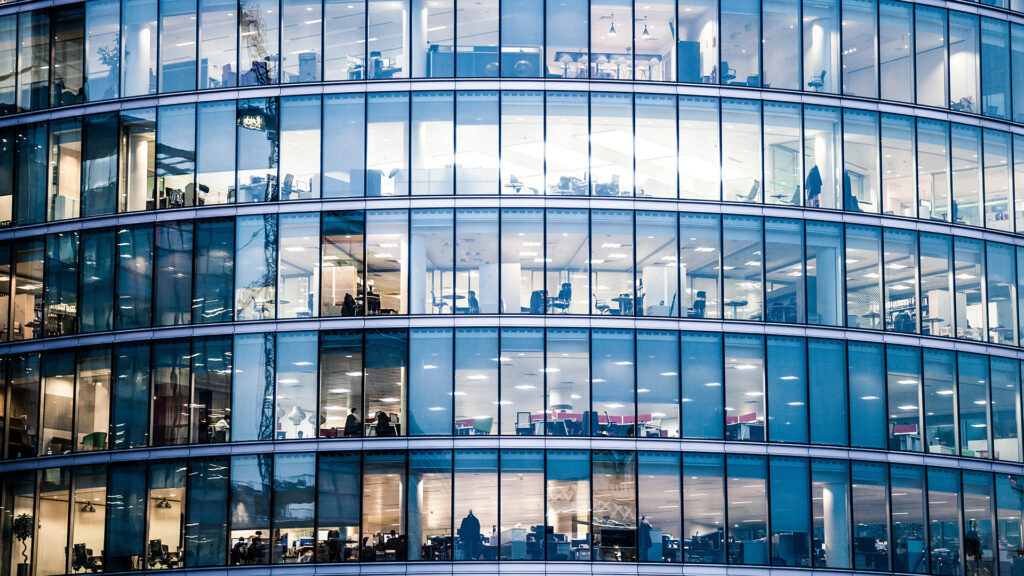COVID-19 Briefing on Business Interruption issues
As COVID-19’s grip across the globe continues to tighten, we have already seen business interruption coverage proceedings commenced in Louisiana this week following the closure of a fish restaurant due to COVID-19 virus contamination. Insurers are busy considering initial claims and their books generally in relation to their exposure. What is certain is that significant financial losses will be suffered and people will consider whether these are (or ought to have been) insured.
As businesses work hard to keep their operations running across the world in the face of the logistical challenges posed by COVID-19, we have been talking to clients in the different jurisdictions in which we work about the insurance cover available in light of the effect on their businesses. What is especially challenging is the “new” nature of this pandemic, in that the virus is so contagious for such a long time, in many cases with no symptoms, as well as the fact that relatively little is known about it. Similar to, say, nuclear contamination, the virus can exist invisibly on surfaces, but while there is no conclusive view as yet, it apparently does not survive on some materials for long. Some report suggest that, depending on the material, the virus can survive for 4-7 days. This issue will also probably be with us for many months, until a vaccine is available or until the virus peters out. In this briefing we look at how policies might respond to business interruption claims in these circumstances and the different issues that might arise. We have included comments from various jurisdictions where we have HFW offices, all of which have been dealing with these issues.
Property Damage and Business Interruption
Many insurers will have provided cover to policyholders for business interruption alongside their property damage cover. After suffering an insured loss, a policyholder can make a property damage claim to ensure that its property is repaired, and a business interruption claim to cover the loss arising from the disruption in its business operations caused by the same incident.
In order to assess whether cover is available, it will be necessary to consider carefully both the wording of the policy, and the nature of the damage and circumstances of the interruption.
With COVID-19, there seem to be two sets of circumstances that lead to an interruption in business operations. The first is a case or suspected case of COVID-19 on the business premises. Here, the governmental advice is to talk to the health authorities and take the steps they advise; usually involving deep-cleaning the premises and isolating staff. Now, of course, in many countries anyone who is able to do so has been advised to work from home.
The second set of circumstances is where a business is advised or ordered to stop operations by a governmental authority, in order to stop or slow down the spread of the virus.
There are a number of difficulties with the concept of business interruption flowing from property damage in relation to COVID-19, and we examine these below.
Requirement for physical damage
This is likely to be the biggest hurdle for most business interruption claims, probably a fatal one for most claims where physical damage is required.
The original purpose of business interruption cover is to protect a business from financial loss caused by interruption in its operations as a result of “direct physical loss of or damage to” its insured property. Customary examples of this would include a fire or a flood to a factory or warehouse. Traditionally it has always been necessary to show insured property damage to trigger the ability to make a business interruption claim. Although there have been discussions around business interruption cover without property damage in recent years, and some developments in this area (see further discussion below of Loss of Attraction extensions, for example) in the vast majority of cases, the key element is damage.
Over the years, Courts in a number of jurisdictions have considered what constitutes damage.
COMMENT FROM AUSTRALIA: In Transfield Constructions v GIO [1996]1, the Australian courts considered an insurance policy which covered “physical loss or damage”. The case concerned a grain silo where the pipes had become so blocked with grain that it could not be used. The Court said that “loss of usefulness might in some contexts amount to damage … but it cannot amount to physical damage. Functional utility is different from physical damage”.
Further, in Ranicar v Frigmobile [1993]2, the Court looked carefully at the meaning of damage. This case involved a shipment of shellfish which was kept at a higher temperature than required under regulations around the export of seafood. While the shellfish was safe to eat, it could not be exported and had therefore fallen in value. The court said that damage meant “a physical alteration or change, not necessarily permanent or irreparable, which impairs the value or usefulness of the thing”
Storing the shellfish at a higher temperature had “undeniably involved a physical change to a substance and that change had the effect of removing one of the primary qualities which the scallops had – their exportability”. It could be argued that contamination of insured property by COVID-19 such that it is unsafe for use by the workforce is a physical change, which would constitute damage.
But what constitutes damage in the context of coronavirus contamination? Does the presence of the COVID-19 virus on business premises constitute “damage” which will result in a property damage claim on which the business interruption claim can hang?
If the coronavirus has penetrated and physically and adversely changed property, even at the molecular level, per, for example Tioxide v CGU [2005]3, it is likely that this would constitute damage.
However, if the virus just intermingles with or alternatively sits on the surface of the property, remaining contagious for a number of hours or days the position is much more difficult.
Comparisons can be drawn with contamination cases that have also been considered by courts across the globe, although there is no one consistent approach.
COMMENT FROM ENGLAND: If the property is not physically changed (at a molecular level) as a result of the contamination, and the contaminant is just intermingling with the property, the standard authority to which the Courts will turn is the Court of Appeal decision in Blue Circle v Ministry of Defence [1998]4. In that case, water contaminated by radioactive material overflowed from a pond onto the insured’s land. The defendant argued that there had been no damage – all that existed was the same land as before albeit mixed with a small amount of radioactive material. The Court of Appeal disagreed. It held the test was whether “…there is some alteration in the physical characteristics of the property which render it less useful or less valuable”. It found that the land was so damaged as the radioactive material had intermingled to such an extent that it rendered the characteristics of the land different. The radioactive material could not be separated by any practical process (and could only be excavated), rendering the land less valuable. Similar comments have been made in the Court of Appeal case of Hunter v Canary Wharf ([1997] concerning dust trodden into carpets such that they need to be professionally cleaned. The Court of Appeal judgment also said “Damage is the physical change which renders the article less useful or valuable.”
What if the virus just sits on property, as appears to be the case with COVID-19?
In Merlin v BNFL [1990]5, the Commercial Court found that radioactive dust settling on/in a house did not constitute damage. There had been no physical damage or change to the property itself, even though the house was somewhat less valuable as a result. In contrast, the Commercial Court found in The Orjula [1995]6 that an acid spill, with the acid sitting on top of a deck and which had not affected the deck, did constitute damage in circumstances where specialist contractors were needed to decontaminate. It is difficult to reconcile the different conclusions adopted by the Court in these two cases and the position remains unclear.
Likewise, the Australian courts have held that contamination can amount to damage in the context of a case about contamination of an insecticide7.
However, with COVID-19 there is a clear difference because the contamination is quick and cheap to clean up, does not need specialist contractors to do so (albeit a business might use a cleaning firm), and will dissipate/die in any event in a matter of hours or possibly days dependant on the surface. Moreover, it is difficult to see how the virus’ (temporary) existence in or on property will affect the property’s value.
COMMENT FROM FRANCE: In common with many other jurisdictions, standard business interruption wordings in France usually require material damage to insured property before a business interruption liability is triggered. According to a survey carried out in February by the principal risk managers’ association (AMRAE), 70% of respondent companies have cover which expressly requires material damage. However in certain contamination cases in the past (and ongoing) the question arises as to whether a contamination may itself constitute a sufficient material damage to property; this has to be considered on the basis of the specific policy wording, and on the nature of the contamination.
COMMENT FROM BRAZIL: Brazil is a civil law jurisdiction and does not follow the doctrine of case law precedent. In common with most other civil law jurisdictions, Brazil (like many other countries in Latin America) has no codified definition of ‘physical damage’ and Brazilian wordings tend not to distinguish clearly between ‘event’ and ‘insured peril’. BI is regulated by SUSEP (Brazil’s insurance authority) as a ‘loss of profit’ product under SUSEP Circular 560/2017. This Circular makes no reference to a requirement for the loss of profits to be consequent upon material damage (i.e. physical damage) to the insured asset, however the loss of profit must be ‘caused by the occurrence of an event listed in the policy’. In practice, this is usually physical damage, or an insured peril causing physical damage, however it could potentially be a ‘pandemic’, with or without the requirement to cause physical damage. The courts in Brazil tend to be more assured-friendly, and a Court might find an insurer liable for business interruption without any evidence of property damage, even where the wording indicates that business interruption is consequent upon property damage. In this sense, it is more likely that policyholders in Brazil will succeed in getting past the physical damage general pre-requisite in order to bring BI claims arising from COVID-19.
COMMENT FROM THE UAE: The common law authorities will have limited application in the UAE and broader region, and the lack of any legal definitions or binding precedents for the meaning of physical damage will no doubt provide fertile grounds for considerable debate on this issue.
As always, it will depend on the facts, but the threshold for physical damage will be a difficult one to overcome.
Causation
It must also be emphasised that for a business interruption claim to succeed, the interruption and resulting loss must be caused by the physical damage, and not merely by a general downturn in business due, for example, to a reluctance of people to go out to crowded places. In effect, there is a double trigger for the loss; the loss must have been caused by the interruption, and the interruption must itself have been the result of the physical damage and not other factors. Both of these can be difficult to prove. The issue here is that any physical damage which can be proven is likely to be minimal (if any), and other factors will then arise which are the real cause of the interruption, such as delays in restoration or recommendations to avoid social contact in any place where people congregate.
COMMENT FROM AUSTRALIA: This was highlighted by the courts in an Australian case8 where a pub business lost trade following a riot outside; customers chose to avoid the venue because of a fall in reputation, not as a result of physical damage.
COMMENT FROM ENGLAND: Causation and quantification of loss is also likely to be an issue in claims where the concept of “wide area damage” comes into play. This relates to the distinction between loss flowing from the damage to the insured property, and loss flowing from “damage” to the wider area. This was considered by the English court in Orient-Express Hotels Limited v Assicurazioni Generali Spa (UK) [2010]9, a case arising out of a claim brought by a New Orleans hotel following the Katrina and Rita Hurricanes. The court found that as the hotel’s profits would have fallen in any event as a result of the hurricane damage to the wider area, its loss was not caused by the physical damage to the insured property. Over the years this case has been widely discussed, and some policies now include clauses which negate it effect by providing cover for loss “resulting from the Incident” rather than loss “resulting from the Damage”. However, we anticipate that this is an issue which will receive further attention as COVID-19 claims are analysed.
COMMENT FROM HOUSTON: The issue of “wide area damage” has also been considered by the US Courts (see for example Prudential v Colleton Enterprises [1992] and Catlin Syndicate v Imperial Palace of Mississippi [2008]) and they have taken a contrary view to that in Orient Express Hotels. In these US cases, the policyholders have argued that but for their own property damage, they would have been the only businesses left standing and therefore would have earned much greater profits than had the hurricanes not occurred. The US Courts have rejected such claims for “windfall profits”. In Colleton for example, the majority of the Court of Appeals interpreted the words “had the loss not occurred” as requiring the Court to ask whether the profits would have been earned had the hurricane not occurred, to which the answer on the facts was “no”. It is apparent from Hamblen J’s judgment in Orient Express Hotels that the English Courts would have decided such cases differently.
We discuss below the cover available under Loss of Attraction extension which is also of relevance in this context.
Exclusions
It is also important to check the nature and scope of the policy exclusions. Some contamination exclusions, for example, specifically refer to viruses which would include the COVID-19 virus.
Value of the claim
The requirement for the physical damage also has implications for the value of the claim. If the contamination can be cleaned up at minimal expense, this could result in a claim for covered damage below the level of the deductible, in which case no business interruption claim would be triggered, assuming that the trigger for business interruption cover is “property damage covered by Section 1” or similar. This depends on the wording, and in some cases the trigger is simply “property damage”, in which case the deductible does not come into it and business interruption cover will be triggered simply subject to there being property damage. With regard to business interruption time deductibles, we address this below.
Waiting period
Business interruption cover for most large facilities is usually structured with a waiting period of at least say 30 days before a claim can be made. This will pose a problem in the context of coronavirus, although the waiting period issue only comes into play if business interruption coverage is triggered (and this usually requires property damage). Depending upon the time period specified, cleaning to remove any trace of the virus is likely in most cases to be completed long before the point at which a claim can be made. While there is still some disagreement among scientists as to how long the virus can survive on surfaces outside the human body, it is obviously different from radioactive contamination in terms of longevity and in terms of complexity of decontamination. The issue then becomes not the contamination of insured property itself but the fact that individuals might have been infected. There might easily be delays during the restoration period which are caused by COVID-19 generally, but not specifically caused by the physical damage, and that would not be covered if there are intervening causes of delay.
Decontamination
Some standard wordings provide cover for decontamination costs under the property damage and business interruption sections. Under the property section, cover is usually provided by way of extension with a fairly low sub-limit. There is likely to be a requirement for a specific legal obligation to undertake decontamination work in order to trigger cover and it may still be subject to the requirement of physical damage to insured property at the insured premises. There may also be issues with aggregation.
In relation to the business interruption section, cover can be available for the costs of decontamination as part of an increased cost of working claim. The decontamination exercise is likely to be impacted by the waiting period and the actual impact on cover may be minimal. Again it will always depend on the facts and the policy wording.
Non-Damage Business Interruption Extensions
In addition to business interruption cover triggered by a property damage claim, some policies contain extensions providing cover for non-damage business interruption which supplement the standard form wording. These are more likely to lead to business interruption claims which fall to be indemnifiable. These are commonly purchased on large risks, for example. We consider the cover available under these extensions below.
Notifiable Diseases Extension
Policyholders can purchase an extension of cover in respect of diseases. Such extensions can take various forms. One common form sets out a list of ‘specified’ diseases and covers business interruption arising from the occurrence of such disease at the insured premises (or, sometimes, within a defined area around it) that causes restrictions on the use of the premises on the order or advice of a competent authority. However, given the timing of the outbreak, currently active policies written on this basis are unlikely to expressly include cover for COVID-19.
However, some policies provide cover for “notifiable” infectious diseases, even if they are not specifically listed. COVID-19 has been classified as a notifiable disease in many jurisdictions, including the UK. Cover is only triggered under this wording where there is a legal obligation to notify the presence of the disease to the relevant authority and it used to be the case that any loss sustained before the disease became legally notifiable will not be covered. However, there are now a number of policies on the market that give retrospective cover to the original outbreak once the disease is classified as notifiable.
COMMENT FROM THE UAE: In certain jurisdictions, such as the UAE, the default position is that any infectious disease is legally reportable. Taking the UAE law as an example, whilst the law does expressly refer to certain named diseases, there is also a sweep-up provision for any “other unspecified infectious diseases”, which would likely be deemed sufficient to catch COVID-19. Whilst the authorities may amend the legislation to expressly refer to new diseases, or may issue circulars making it clear that any new disease must be reported, as above, the default position remains that diseases of this nature are legally reportable from the outset. As such, in jurisdictions with these reporting requirements, cover may be triggered from a far earlier date than would be the case in jurisdictions requiring an additional act by the relevant authority to declare the disease to be “notifiable”.
COMMENT FROM HONG KONG: The leading case considering Infectious Disease Extensions under Business Interruption policies is New World Harbourview Hotel Co. Ltd & v ACE Insurance Ltd10. This case is an interesting comparator with COVID-19 as it also arose out of the outbreak of a virus, in this case the SARS epidemic in 2003. The Hong Kong Court of Final Appeal held that the trigger for cover under the extension to that policy was the requirement to notify the disease to the relevant authority; and despite the fact that there were numerous cases of the disease and losses suffered prior to that point, cover under that wording was not retrospective. Note that a number of policies give retrospective cover to the original outbreak once notifiable status is reached. The requirement for physical damage to insured property will, it is thought, prevent most COVID-19 business interruption claims in HK.
Denial/Prevention of Access by Public Authority
Probably what may turn out to be the most relevant extension is cover for interruption by order of a public authority. This provides cover to the policyholder for losses sustained when it has been prevented from accessing the insured premises by public authority order (or sometimes advice) as a result of, for example, a notifiable infectious disease. Some wordings require occurrence of the disease at the insured premises (or within a defined area of it) as well as an order for their closure from the relevant authority, whereas others simply require an order for closure. Many wordings will expressly exclude from Denial of Access cover action taken to suppress/prevent the spread of disease, leaving such cover to a Notifiable Disease extension if purchased.
The impact of this will depend upon the regulations in each jurisdiction. For policyholders in the UK, it is likely that most of the losses will be sustained after the government classified COVID-19 as notifiable on 5 March 2020, although only once governmental closure orders start to be issued. While the Prime Minister has recommended people not to visit restaurants, pubs and clubs, there is as yet no governmental order mandating closure. This has however now occurred for schools, and wider closure orders are to be anticipated. Further, the Chancellor has now commented that where a policy covers a pandemic, the government advice to shut pubs and clubs etc would be sufficient for businesses to claim on their insurance where they have appropriate business interruption cover for pandemics in place. We shall have to watch how this develops and how insurers react. For those covers requiring simply a closure order and no damage at or in the vicinity of the premises, of which we have seen examples albeit they may be rare, business interruption claims will be much more easily indemnifiable under these extensions, so this is something of a lottery and both insurers and policyholders will be anxiously checking the wordings they have actually agreed.
COMMENT FROM HOUSTON: There are bills before certain state legislatures in the US (including New Jersey bill A-3844) that are designed to provide a mechanism by which smaller businesses that suffer losses due to disruption caused by COVID-19 may recover those losses from their insurer. If the business has purchased an insurance policy, which provides cover for loss of use and business interruption, it shall be construed to include among the covered perils under that policy coverage for business interruption due to global virus transmission or pandemic (otherwise subject to usual limits, terms and conditions). Watch this space.
Loss of Attraction
A Loss of Attraction extension is intended to cover a loss of revenue for a business which is sited near to an attraction which has closed. For example, if a popular tourist attraction closes, then footfall to nearby shops and restaurants will decrease. This extension usually requires there to have been physical damage to the property within a defined area of the insured premise, and which damage causes the business interruption, although in recent years insurers have begun to write non-damage loss of attraction cover, for example, in the context of a nearby terrorist attack which may affect footfall regardless of damage. It is therefore absolutely key to check whether the wording requires physical damage, which will be a difficult threshold to pass in the case of COVID-19.
Contingent Business Interruption
Contingent Business Interruption is designed to cover the situation where the policyholder suffers loss because of damage to the property of one of its suppliers or customers and is of particular relevance where global supply chains have been disrupted, as they have in the current COVID-19 crisis. The policyholder is able to claim as if the damage had occurred to its own insured property (subject of course to the other terms and conditions of cover). However, the same issues arise with Contingent Business Interruption as with a standard business interruption claim; in particular, the need to be able to demonstrate physical damage as the underlying cause of the interruption to business.
COMMENT FROM THE UAE: Investigating those incidents, given their geographical location and in circumstances of reduced travel and accessibility, will be extremely challenging.
Concluding comment
The vast majority of potential business interruption claims are likely to fall at the first hurdle, which is the requirement in most cases to prove physical damage. In most cases this will be an onerous obstacle to overcome, and in any event proven physical damage will usually be below the deductible for covered damage, meaning that where “property damage covered by Section 1” or similar is the trigger, no business interruption liability will be triggered. Where simply “property damage” is the trigger, the deductible would not come into it. However and in any event, given that the virus probably remains on surfaces for only a matter of days at most, issues will arise in respect of the double causation test for business interruption which requires the interruption to have been caused by the physical damage. Most claims will be within the typical waiting periods of, say, 30 days which we see in virtually all “large” property and energy risks. The most obvious lacuna lies in non-damage business interruption extensions, and particularly in those extensions for closure by order of a public authority, provided that the wording does not also require physical damage. But we are all in new territory, and it will take time before we know what the “new normal” looks like. The same applies to business interruption coverage in the context of COVID-19.
Business interruption claims are rarely straightforward and often require careful analysis of the policy wording and the factual circumstances surrounding the loss. If you would like to discuss this or any other insurance issues arising out of the COVID-19 outbreak, please do get in touch.
Footnotes
- [1996] NSWCA 538
- Ranicar v Frigmobile Pty Limited [1983] Tas R 112
- [2005] EWCA Civ 928
- [1998] EWCA Civ 945
- [1990] 3 WLR 383
- [1995] C.L.C. 1325
- Bayer Australia Ltd v Kemcon Pty Ltd (1991) 6 ANZ Insurance Cases 61-026
- McMahons Tavern Pty Ltd v Suncorp Metway Insurance Ltd [2004] SASC 237
- [2010] EWHC 1186 (Comm)
- (2012) 15 HKCFAR 120








